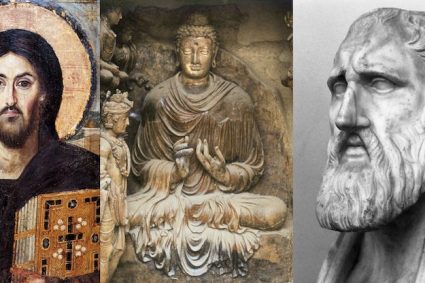

Buddhism, founded by Siddhartha Gautama, commonly known as the Buddha, in the 6th century BCE in ancient India, has grown into a major global religion with millions of followers. Rooted in the teachings of the Buddha, Buddhism offers a profound philosophical and spiritual path towards understanding the nature of existence and achieving liberation from suffering.
The Life of the Buddha:
Siddhartha Gautama, born into a royal family, renounced his princely life in pursuit of spiritual truth. After years of meditation and self-discovery, he attained enlightenment under the Bodhi tree, becoming the Buddha, or “the awakened one.”
The Four Noble Truths:
The foundational principles of Buddhism are encapsulated in the Four Noble Truths, serving as the framework for understanding the nature of suffering and the path to liberation:
- Dukkha (Suffering): Life is inherently unsatisfactory and marked by suffering.
- Samudaya (Cause of Suffering): Attachment and craving are the causes of suffering.
- Nirodha (Cessation of Suffering): Liberation from suffering is attainable through the cessation of craving.
- Magga (Path to the Cessation of Suffering): The Eightfold Path provides a guide to ethical and mental development, leading to enlightenment.
The Eightfold Path:
The Eightfold Path represents the practical guidelines for leading a meaningful and compassionate life:
- Right View
- Right Intention
- Right Speech
- Right Action
- Right Livelihood
- Right Effort
- Right Mindfulness
- Right Concentration
Reincarnation and Karma:
Buddhism embraces the concepts of reincarnation and karma. Reincarnation involves the cycle of birth, death, and rebirth, while karma, the law of moral cause and effect, determines the quality of one’s existence in future lives.
Three Jewels of Buddhism:
Buddhists take refuge in the Three Jewels as a fundamental expression of their faith:
- Buddha (the Awakened One): The historical Buddha and the potential for enlightenment within every being.
- Dharma (the Teachings): The Buddha’s teachings on the nature of reality and the path to liberation.
- Sangha (the Community): The monastic community and the broader community of Buddhist practitioners.
Theravada and Mahayana Buddhism:
Buddhism has two major traditions: Theravada and Mahayana. Theravada, the “Teaching of the Elders,” emphasizes personal enlightenment. Mahayana, the “Great Vehicle,” emphasizes compassion and the aspiration to attain Buddhahood for the benefit of all beings.
Zen Buddhism:
Zen Buddhism, a school of Mahayana, places emphasis on direct experience and meditation as a means to enlightenment. It is characterized by its minimalist approach and the practice of mindfulness in everyday activities.
Mindfulness and Meditation:
Central to Buddhist practice is mindfulness meditation, a technique aimed at cultivating awareness and concentration. Mindfulness is not only a form of meditation but also a way of living, promoting present-moment awareness and mental clarity.
Cultural Impact and Art:
Buddhism has profoundly influenced art, architecture, literature, and philosophy across Asia. Iconic symbols such as the lotus flower, the Buddha statue, and intricate mandalas reflect the deep spiritual symbolism inherent in Buddhist culture.
Engaged Buddhism:
Contemporary Buddhists, inspired by the concept of Engaged Buddhism, actively work towards social and environmental justice. Prominent figures like Thich Nhat Hanh advocate for the application of Buddhist principles in addressing global challenges.
Conclusion: The Path of Compassion and Wisdom:
Buddhism, with its emphasis on compassion, mindfulness, and the pursuit of wisdom, offers a profound path for individuals seeking to understand the nature of existence and alleviate suffering. As it continues to evolve and adapt in diverse cultural contexts, Buddhism remains a beacon of enlightenment and a source of inspiration for millions around the world.






